The IWC GST Aquatimer 2000, the Epitome of a Cool 1990s Dive Watch
An integrated bracelet diver that gives the Rolex Sea-Dweller a run for its money.
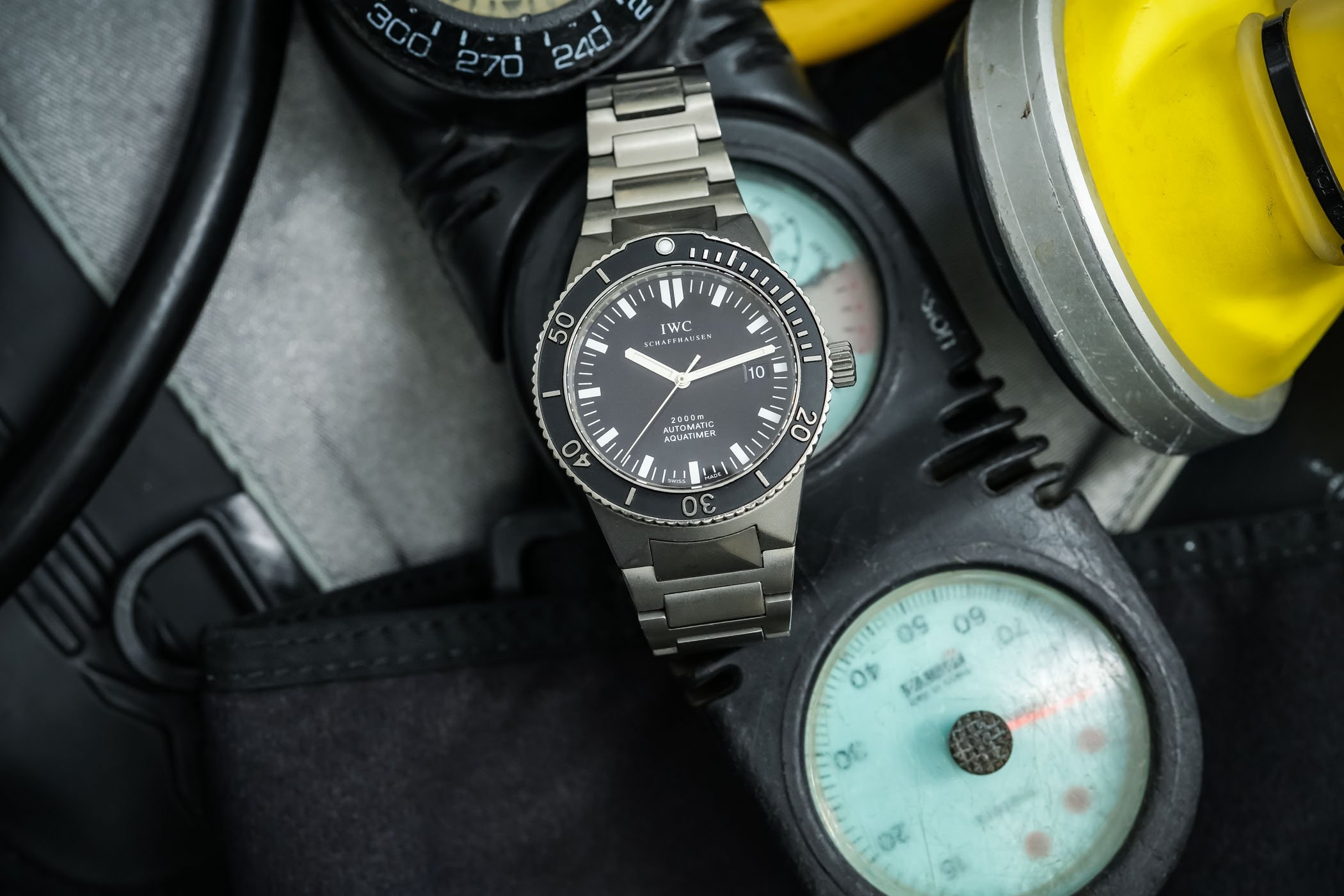
A lot has been written about neo-vintage dress watches. It certainly makes sense – in the 1980s and 1990s, many watch manufactures embarked on a journey to relearn and rediscover the art and science of the complicated wristwatch. These watches were generally slim, cased in precious metals, and elegant. In looking at this segment of neo-vintage watches, however, I feel many collectors overlook the other end of the spectrum: the inventive and amazing sports watches that were launched during this time. In the inaugural article in The Collector’s Corner, I wrote about the IWC Doppelchronograph reference 3711. Let’s revisit 1990s IWC in this article and take a look at a watch that gives the Rolex Sea-Dweller a run for its money. Enter the IWC GST Aquatimer 2000. Water resistant to 2,000 meters? Check. Integrated bracelet? Check. Instant coolness? Oh yes, check indeed!
IWC is best known for its aviation-themed watches – so I think it’s worth taking a closer look at the Schaffhausen company’s less publicised foray underwater. IWC’s first plunged into the world of dive watches with the ref. 812 Aquatimer in 1966, a reference which became the namesake for all IWC’s aquatic watches. The ref. 812 was equipped with two crowns and an internal diving bezel, and achieved a 200m water-resistance rating thanks to a super-compressor case construction. In a super-compressor case, the caseback is spring-loaded, which means it has some give and doesn’t sit completely pressed against the gasket inside. As external pressure increases, however, the caseback is pressed further into the gasket (compressing it), thereby achieving what can be described as dynamic water resistance.
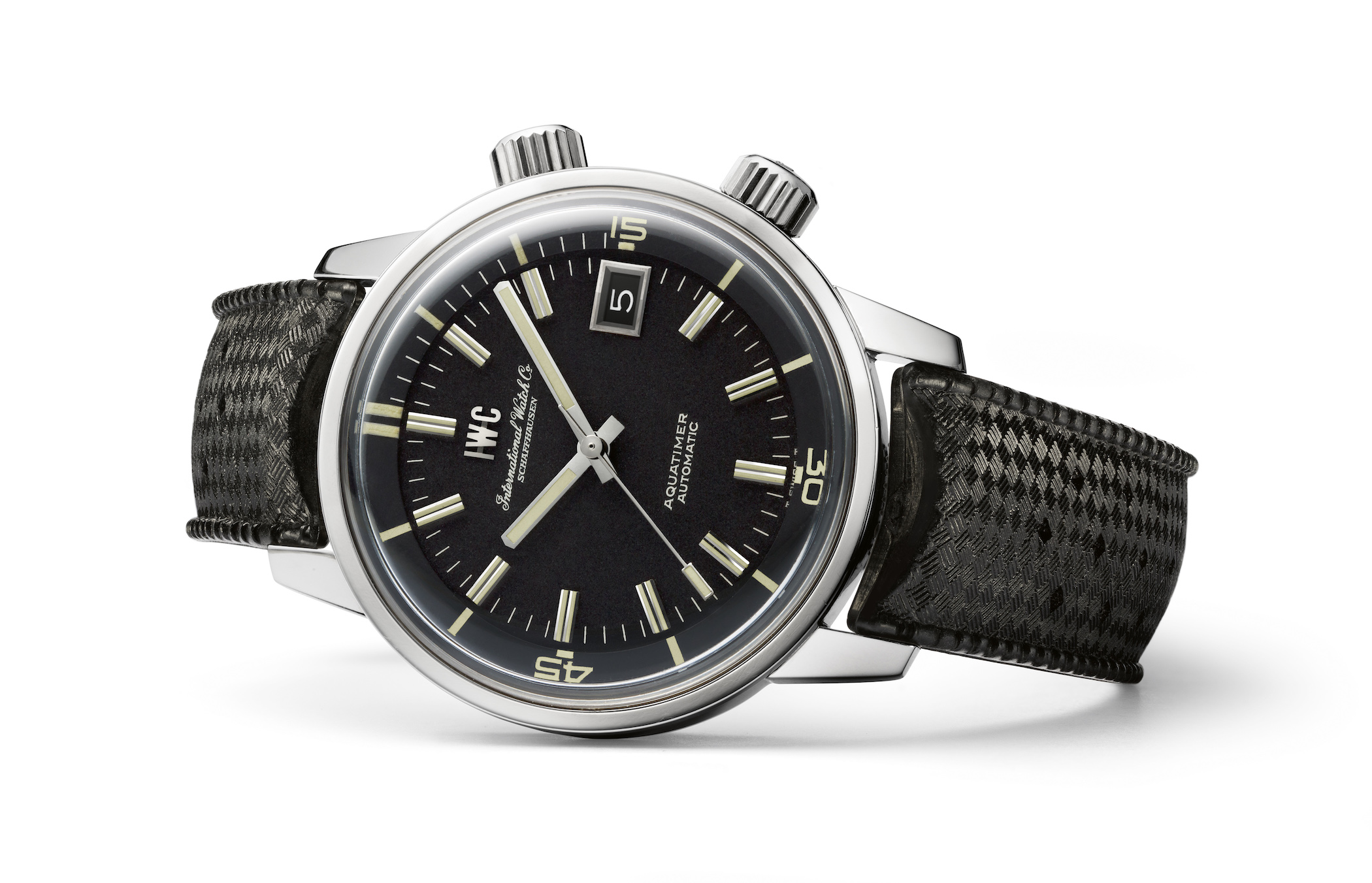
The next step in the Aquatimer’s history came with the ref. 3504, the Porsche Design Ocean 2000, whose civilian version was produced between 1982 and 1986. The Ocean 2000 was a radical break from the styling cues established in the ref. 1812 – crafted entirely out of bead-blasted titanium, the Ocean 2000 was flowing and round, with an organic bracelet that seamlessly integrated the case. Despite its soft curves, the Ocean 2000 was extremely capable, being the first dive watch capable of withstanding depths up to 2,000 meters. In the typically overengineered fashion of late-20th century IWC, the bezel featured a safety mechanism: it needed to be depressed on two points on opposite sides of the bezel to be turned.

When Porsche terminated its agreement with IWC in March 1998, it was clear that IWC needed a replacement. After all, Porsche Design watches are estimated to have made up to 20% of IWC’s sales toward the end of the relationship. The importance of the Porsche Design era to IWC’s heritage can’t be exaggerated. The designs were bold and, more importantly, the Porsche Design range established IWC as a true player in incorporating advanced materials science in watchmaking. Case in point, the 1986 IWC Da Vinci Perpetual Calendar 3755, which was the world’s first wristwatch with a black zirconium oxide case, was IWC’s way of saying “Hey, we can do it in a dress watch too!”
So, coming back to the need for a replacement, IWC presented the GST line in Vicenza in September 1997. The GST collection was so named, rather unimaginatively if you ask me, for the three metals the collection was offered in gold, steel, and titanium. Adding the “G” in the name of the collection was a bit of an oversight, it turned out, as only the first-generation GST Chronograph and the GST Alarm were offered in an 18k gold case and bracelet.
The GST watches featured a strong, angular case, and an integrated bracelet. They were masculine and outright sporty. That brings me to what is probably the sportiest of the lot – the GST Aquatimer 2000.
The IWC GST Aquatimer 2000 – The Basics
The ref. 3536 Aquatimer was presented in three variations: titanium with black dial (ref. 3536-001), steel with black dial (ref. 3536-002), and steel with silver dial and gold-plated hands and indices (ref. 3536-003). Regardless of the case material and dial, the basic measurements are the same: 42mm diameter, 14.5mm thickness, with a lug-to-lug measurement of 49.5mm (watch only). Due to the flare of the bracelet’s first integrated links, the latter measurement balloons to close to 57mm when the watch is worn on its bracelet. The canister-shaped case gives way to sharp, well-defined lugs that jut out from the case flank. The big-crown look is completed with a very prominent crown at 3, signed with the traditional IWC fish logo, and no crown guards.
Despite the extreme capabilities of the Aquatimer 2000 (again, 2,000 meters!), you’ll notice the absence of a helium escape valve. I suppose that’s what happens when the watch is built so robustly that no helium can even enter the case. Grand Seiko did something similar in the Hi-Beat 36000 Professional 600m Diver’s from 2017.
The case finishing depends on the case material. In titanium, the watch gains a look that can be best described as tactical. The case and bracelet are entirely bead-blasted – not even the flanks of the bracelet links are polished. Though some may lament the lack of refinements in the finishing department, we need to understand that this watch isn’t trying to be refined. It’s trying to be the best tool it can. On the steel models, the case is primarily linearly brushed, with some polished accents, such as on the case flanks and on the intermediary bracelet links. The caseback of all ref. 3536 Aquatimers is adorned with the “International Watch Co. Schaffhausen” script and the image of a German U-Boot.
The no-frills aesthetic continues to the dial, which is printed white on a matte black base. In keeping with the uniform design, the date wheel, too, is white print on a black base. I like date displays that don’t call undue attention to themselves – the date is there when you need it, but it doesn’t scream for attention.
There is a wonderfully unique double index at 12 o’clock for orientation. At 6 o’clock, you have the signature – as the Aquatimer can be found in both tritium or Luminova variants, you’ll see both “T SWISS MADE T” and “SWISS MADE” signatures. A note on the tritium versions: IWC wanted to achieve colour differentiation for easier identification of the orientation of the watch and of the hands versus other markings. In order to do that, the hands, the index at 12 o’clock, and the bezel pearl all used tritium markings, whereas the dial markers except at 12 used Luminova. The switch to full Super-Luminova came after roughly 2000.
The hands are pencil-shaped, matte white lacquered, and have the same granular texture you think of when you picture a Speedmaster’s handset. Note: the steel models feature applied indices, with polished hour and minutes hands.
Coming to the bezel next, the calibrations are done in relief in what is possibly the only element of the watch you could consider slightly embellished. There is a slight asymmetry to the bezel insert, as you’ll see that it flares out at 12 o’clock, becoming wider to accommodate a large lume plot. Yes, this is a dive watch so it’s a unidirectional bezel, of course, and has 60 clicks.
The bezel has three quirks. First, it’s machined from a solid piece of the respective metal to match the case – no inserts here! The base of the bezel is black chrome-plated for a high-contrast look against the numerals in relief. Second, there are actually four screws holding the bezel in place so it cannot accidentally pop off. This kind of bezel is known as a captive bezel. Incidentally, the watch was originally shipped with a screwdriver that could be used to remove the bezel for thorough cleaning. Finally, much like the Ocean 2000’s bezel, the Aquatimer 2000’s bezel needs to be pushed down before it can be turned.
Now, let’s come to the bracelet. It is a two-link bracelet, with H-shaped primary links and rectangular intermediaries. The bracelet is an integrated affair, with the first primary link after the junction with the case matching the width of the lugs, before tapering down to 18mm. IWC was way ahead of its time, equipping the bracelet with a quick-release system to add and remove links quickly. It was such a good system that IWC still uses it to this day! The bracelet ends in a single-trigger deployant clasp, which is nicely circular-grained inside.
The bracelet has two downsides. The first is the large flare due to the rigid outcropping of the lugs, making the watch a difficult fit for those of us with small wrists. The second is that there are few replacement strap options because of the proprietary lug junction. An optional velcro strap in black or grey was offered – these straps attached to the first male link of the bracelet. Luckily, the fabric strap from the IW3715-36 and the alternate rubber strap from the IW3548 fit the Aquatimer!
The Aquatimer 2000 is powered by an ETA calibre 2892-A2 (calibre 37524 in IWC parlance), which underwent a thorough upgrade by IWC, including the use of a 21k gold rotor mass. The early models are entirely gilded, later Aquatimers’s calibres get a nickel-plated treatment. Other features of this tried-and-tested movement include a beat rate of 28,800 vibrations per hour, bidirectional winding, a power reserve of 42 hours, features 5-position adjustment, a quickset date, and hacking seconds.
Why should you consider the IWC GST Aquatimer?
If you’re feeling a bit of integrated bracelet fatigue, I don’t blame you. Looking at the designs of the last few years, some stylistic choices look a little too familiar, and many of the new entrants are just a tad derivative. But to those of you who have not entirely given up on the genre, I say: let’s look to the past! The IWC GST Aquatimer is a fantastic example of a watch that firmly fits into this genre while looking nothing like the usual suspects. I mean, how many other integrated bracelet hardcore divers can you name off the top of your head?
So, the first reason why you should consider this watch is functionality. The Aquatimer does not yield an inch to the Rolex Sea-Dweller when it comes to being an epically overengineered dive watch. And it’s thinner to boot! I consider the bracelet to be one of the many strengths of the watch, with a solidity and feeling of quality that would feel at home on a modern watch, let alone one made over thirty years ago. There are so many additional features built in to make the watch tank-tough, it’s really a testament to the incredible build quality IWC had achieved even back then. Look at the quick link removal system or the captive bezel construction – to the technical-minded watch collector looking for a luxury diver, this is now at the top of my recommended list!
Second, price. There seems to be quite a spread on Chrono24, depending on condition and accessories. An example will run you between EUR 4,000 and 7,000. Let’s split the difference and call it EUR 5,500. I have seen some great offers around the 3,000 mark not too long ago, so it doesn’t hurt to keep looking. Even though the steel models were likely produced in fewer numbers than those in titanium, there doesn’t seem to be much of a premium. Of course, the rarest and most collectable of the Aquatimers is the ref. 3536-003 in stainless steel with silver dial and yellow gold-plated hands and indices. All told, only 600-800 were produced. There aren’t too many comps or recent sales that I can find, but those that I did land squarely in the same range described earlier. No matter how you slice it, you’re getting an incredible package. I mean, you could even pick up a Tudor Ranger and have some cash to spare compared to the Sea-Dweller!
Given a choice, I would go for the version in titanium. I feel it better represents the ethos of IWC in the last years before the company was acquired by Richemont. Additionally, the titanium version best carries forward the legacy of the Porsche Design era of the company and of IWC’s history-making dive watches as a whole.


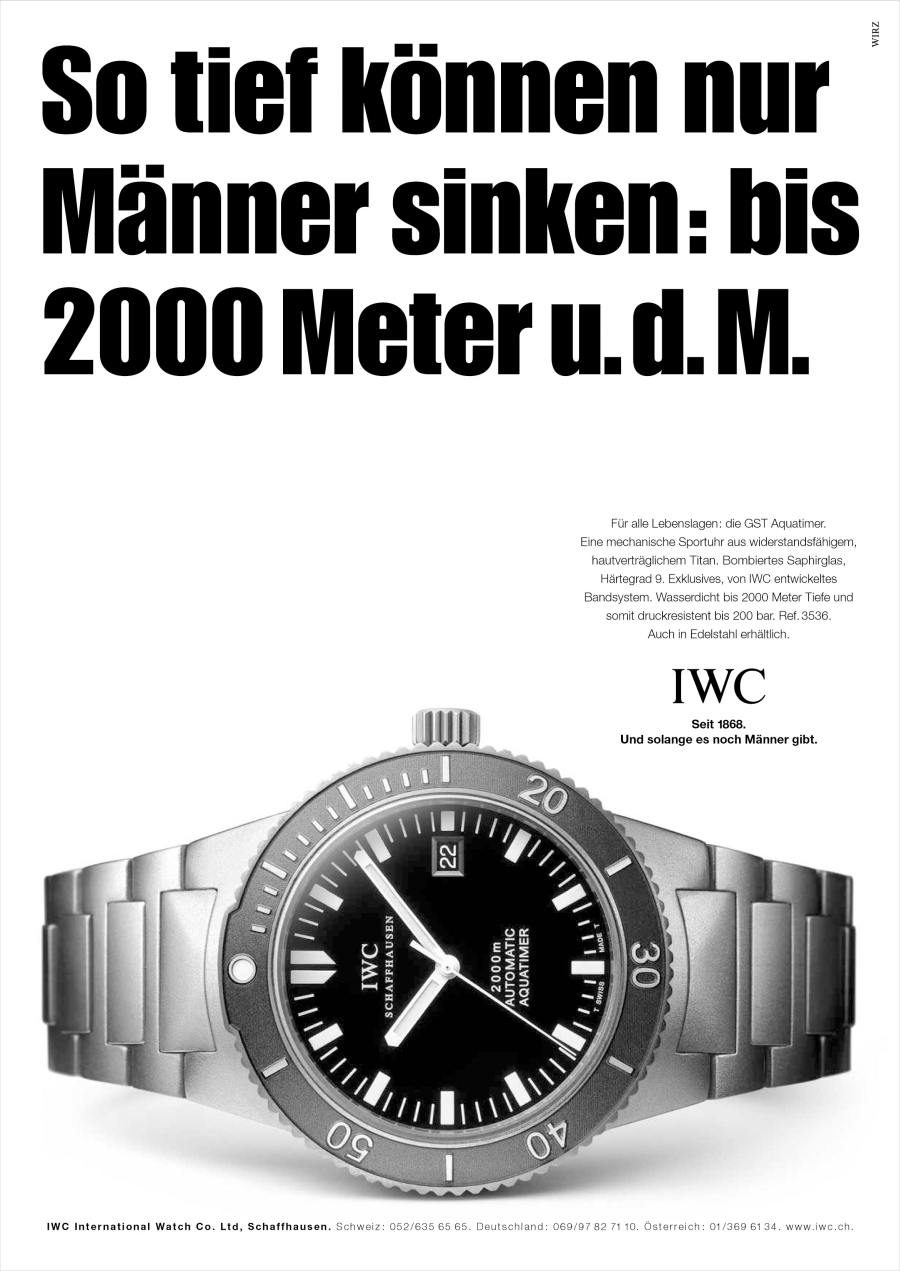

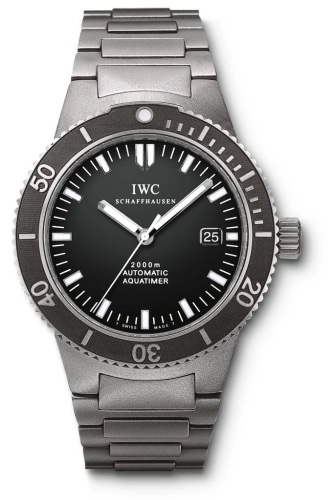
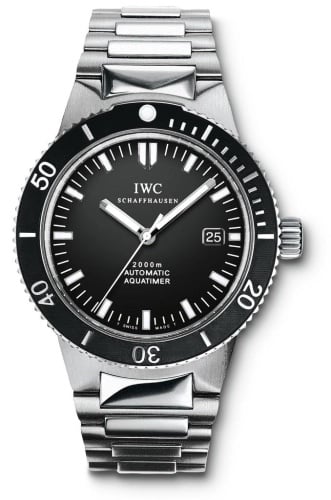

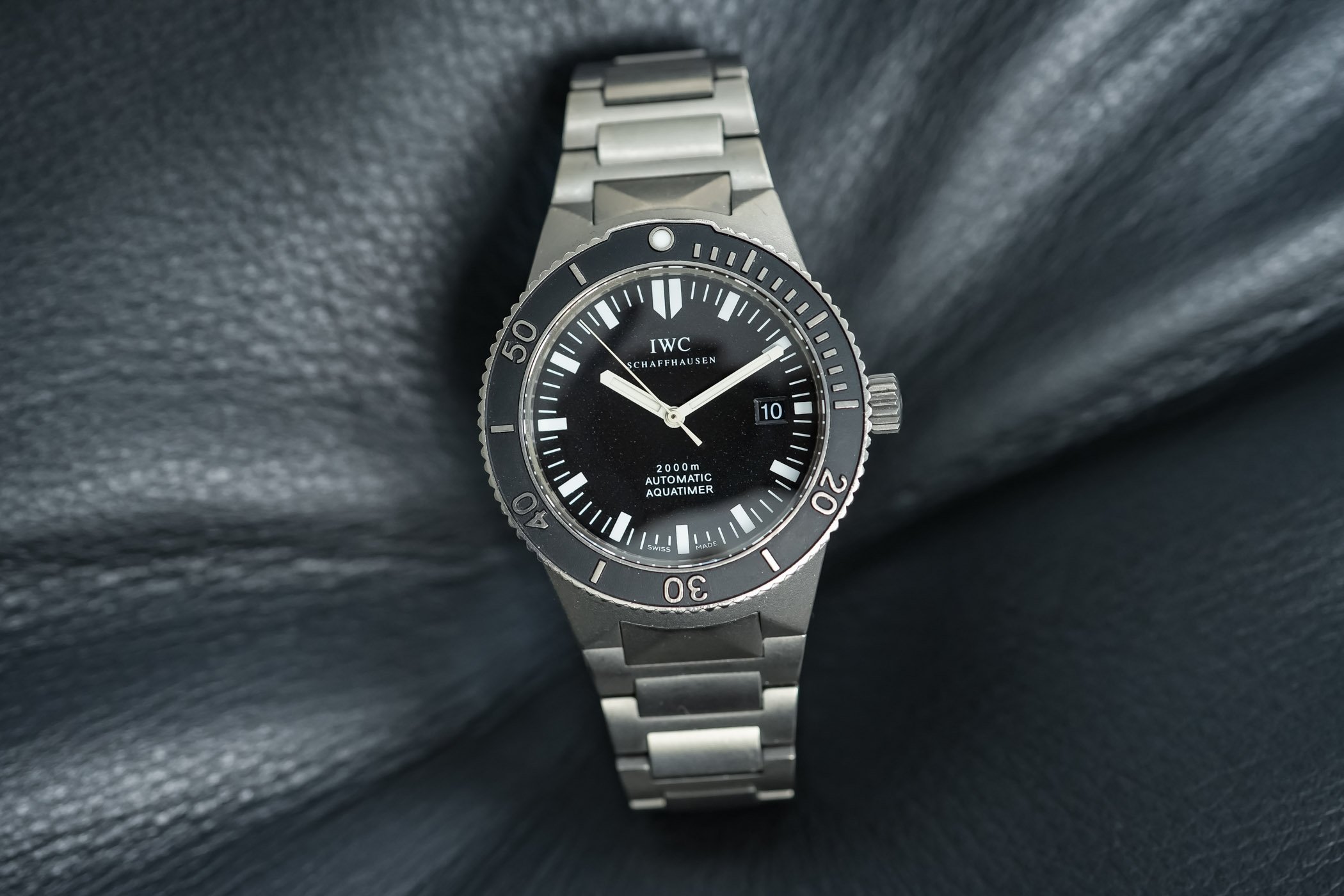





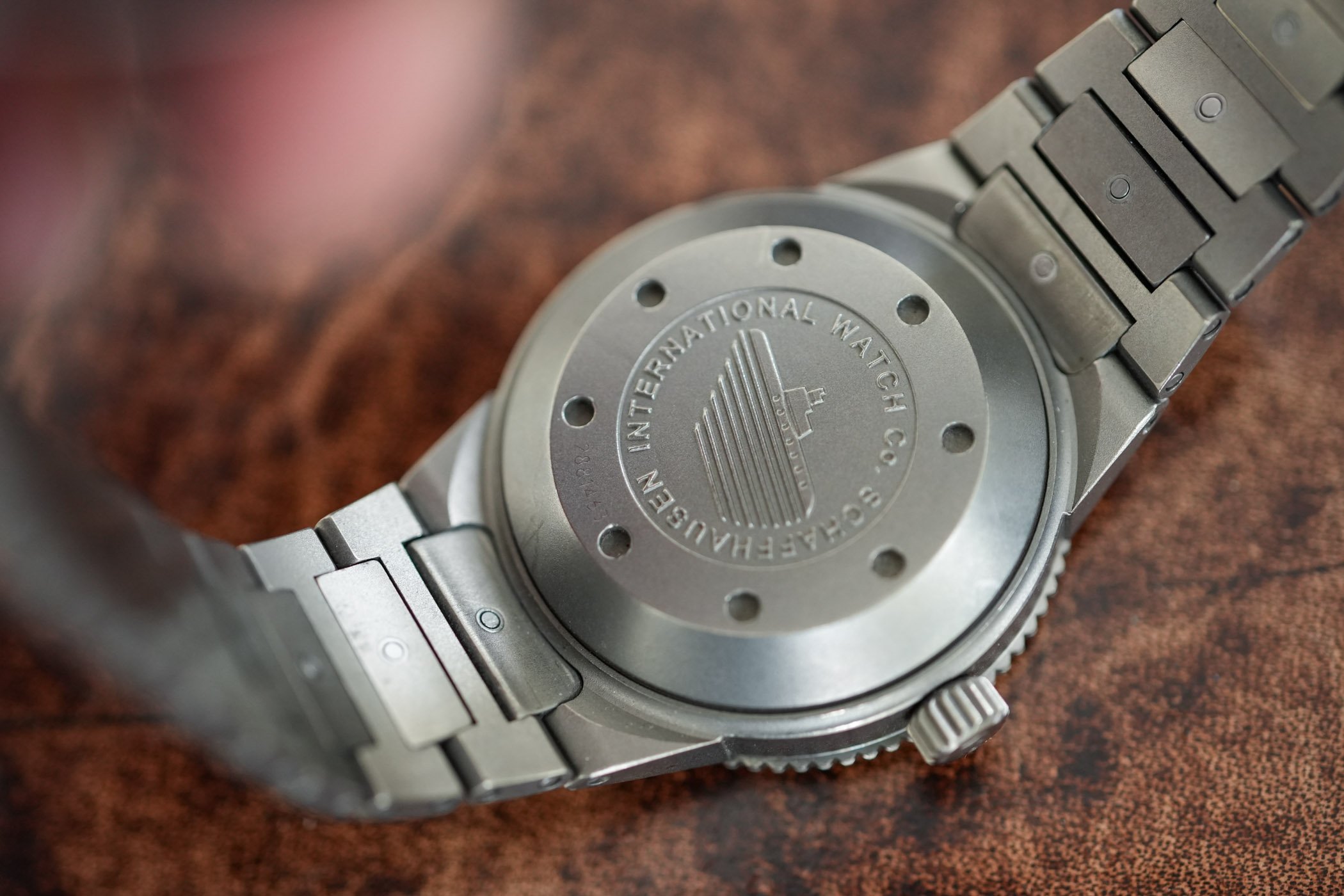


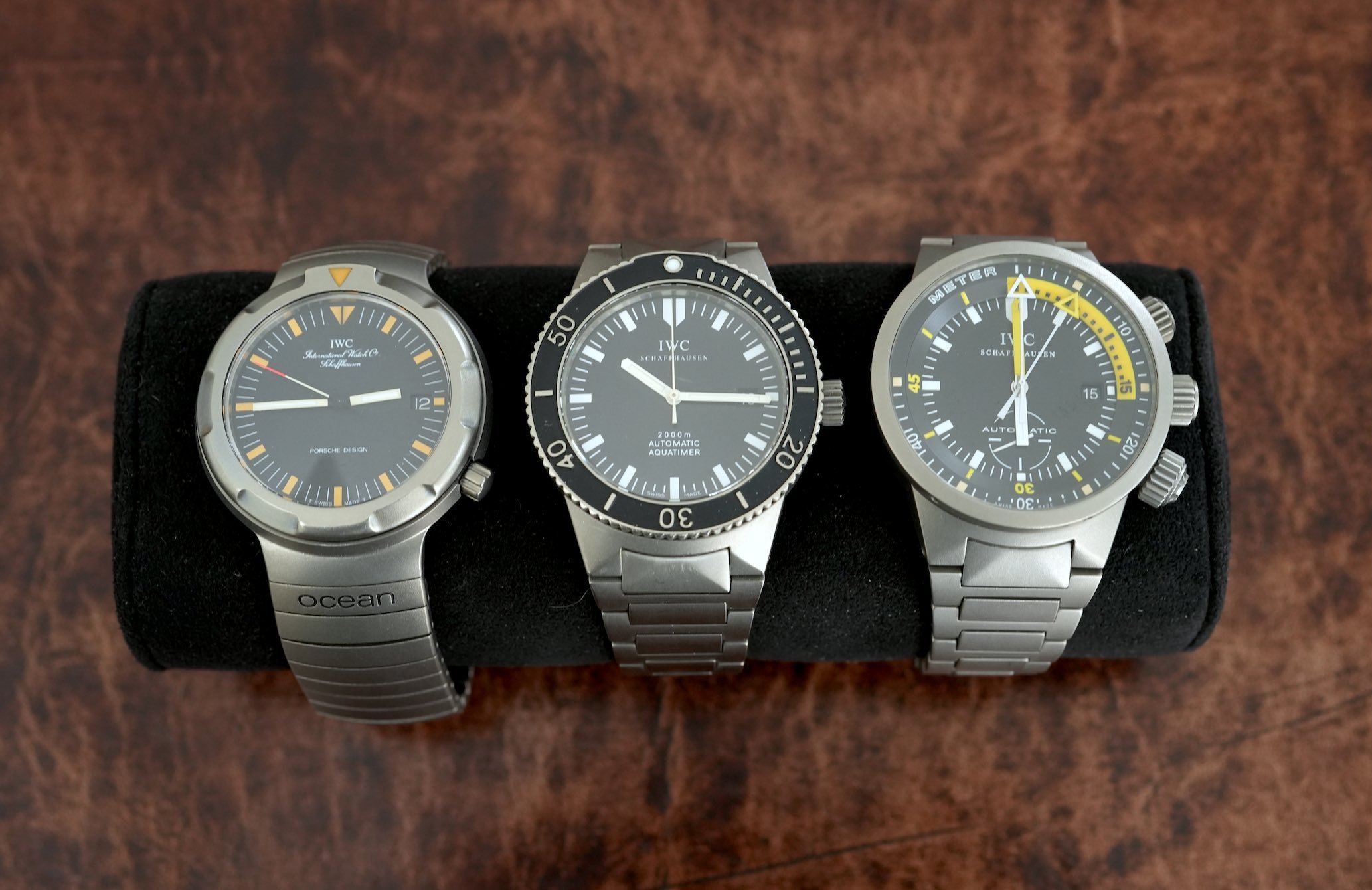



5 responses
Could not agree more – the GST Aquatimer is one of IWCs best watches ever!
I personally went for the titanium and love it – should you be more of a bling bling type go for the stell. GST steel watches are the coolest understated bling ever made (still lusting after that chrono :-))
I would rather have the IWC Ocean 2000. It’s more original on its design.
Great write up!
One of the finest watches from IWC – in terms of restrained elegance and pure functionality. I kind of wish I’d bought one back in the day. I was given an early 2000s IWC Da Vinci SL which shows a similar kind of elegance and restraint in the design – although more dress watch oriented. IWCs have become less attractive to me since Richemont took them over – too flashy.
Fabulous article! I have a GST Perpetual which I bought in 2001 and to this day, it’s still the favorite in my collection of watches. This article is giving me the itch to find an Aquatimer in titanium!
I bought mine a while back. I was in the market for a dive watch and I saw the GST 2000. It literally was love at first sight. And I can tell you that IWC WARRANTY AND FACTORY REPAIR is second to none.